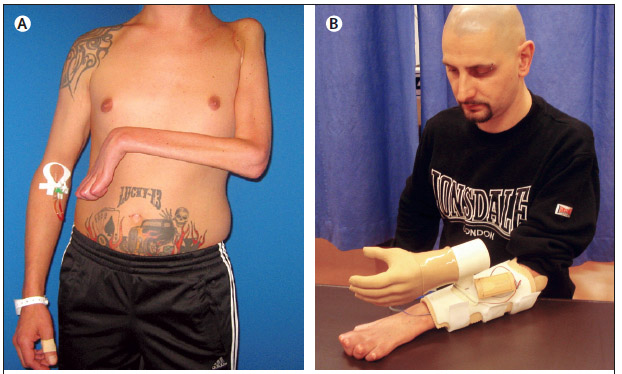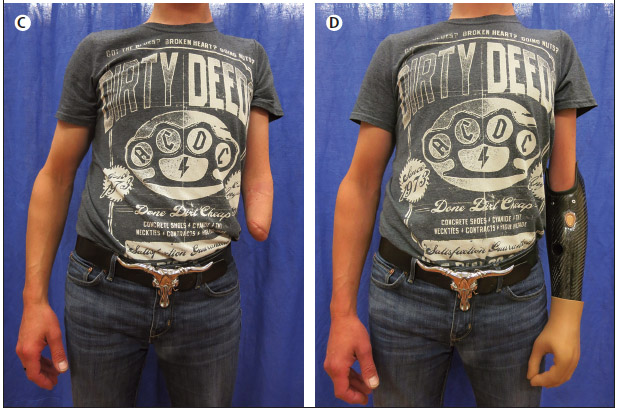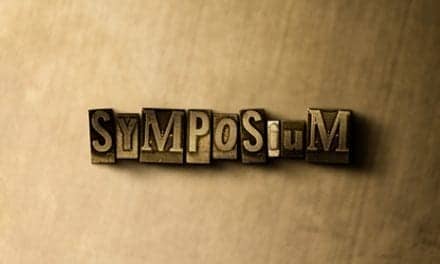
Pictured at left, wasting of left arm musculature, inability to extend the wrists, and fixed flexion of all digits. Pictured at right, the hybrid fitted hand. (The Lancet)
Three Austrian men with hand function severely limited by brachial plexus injuries with lower root avulsions chose to have portions of their upper extremities amputated as part of a “bionic reconstruction,” allowing them to wear a thought-controlled prosthetic hand.
According to a report published in The Lancet and led by Oskar C. Aszmann, Medical University of Vienna, the men, ages 26, 32, and 33 years, chose elective amputations as part of a procedure to surgically transfer nerves. The transfers help create independent electromyographic signals that enable the person who wears the prosthetic to have multifunctional control of the device.
Among traditional nerve transfers used to treat this type of injury, shoulder and elbow function can be restored, but distal function is poor. The report, titled “Bionic Reconstruction to Restore Hand Function After Brachial Plexus Injury: A Case Series of Three Patients,” notes that even after repairs were attempted for finger flexion and wrist extension, patients continued to demonstrate a preference to hold objects with a thracobrachial or forearm-abdominal grasp.

Pictured at left, the healed residual limb. Pictured at right, the final prosthetic fitting. (The Lancet)
Rehabilitation
Prior to surgery, the electromyographic sites were selected and cognitive training commenced. Patients used biofeedback as part of signal training, activating muscles that were depicted on a monitor as graphs. That process later was used with a virtual hand. The training improved signal quality and control, according to the report.
Patients were the progressed to a hybrid hand for more practice before finally adopting the prosthetic hand.
The Action Research Arm Test (ARAT) and Disabilities of the Arm, Shoulder and Hand (DASH) questionnaire were among the tests used before and after the intervention to evaluate global arm function. The mean results of all patents are as follows:
DASH Mean (SD): Before 46.5 (18.7); After 11.7 (8.4)
ARAT Mean (SD): Before 5.3 (4.7); After 30.7 (14.0)
According to the authors of this study, the results indicate that for patients who are affected by global brachial plexus injury with lower root avulsions, and who have no alternative treatment, bionic reconstruction offers a means to restore hand function.
“So far, bionic reconstruction has only been done in our centre in Vienna. However, there are no technical or surgical limitations that would prevent this procedure from being done in centres with similar expertise and resources,” the authors note.
[Source: The Lancet]




